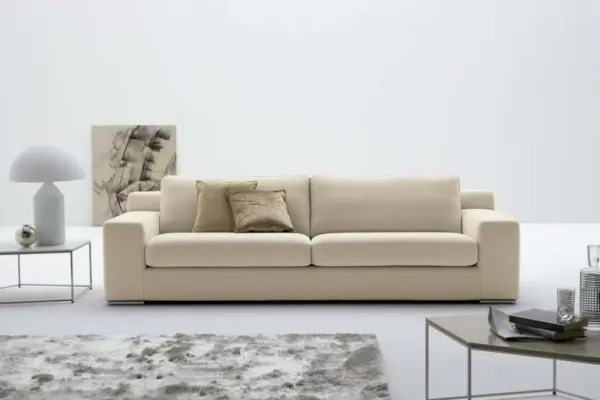A sofa is not just an interior item, but also a functional center of your home, a place for rest and communication. Selecting a suitable sofa is an investment in comfort for many years. What sofa selection criteria should be considered to purchase truly high-quality and durable furniture? What are the best sofas offered by the modern market? How to identify a reliable and sturdy sofa that will serve you for many years? In this practical guide, you will find answers to all important questions.
Did you know that the average American spends about 2000 hours a year on their sofa? That's why it's so important to make the right sofa purchase, especially if it will be used as a living room sofa where the whole family gathers, or as a quality sofa for sleeping and daily use.
"A sofa is not just a piece of furniture, it's the center of home life. Choose it as if you were choosing a partner — it should be reliable, comfortable, and, of course, should match your character and lifestyle." — Thomas Hampson, interior designer
Upholstery Material and Its Impact on Sofa Durability
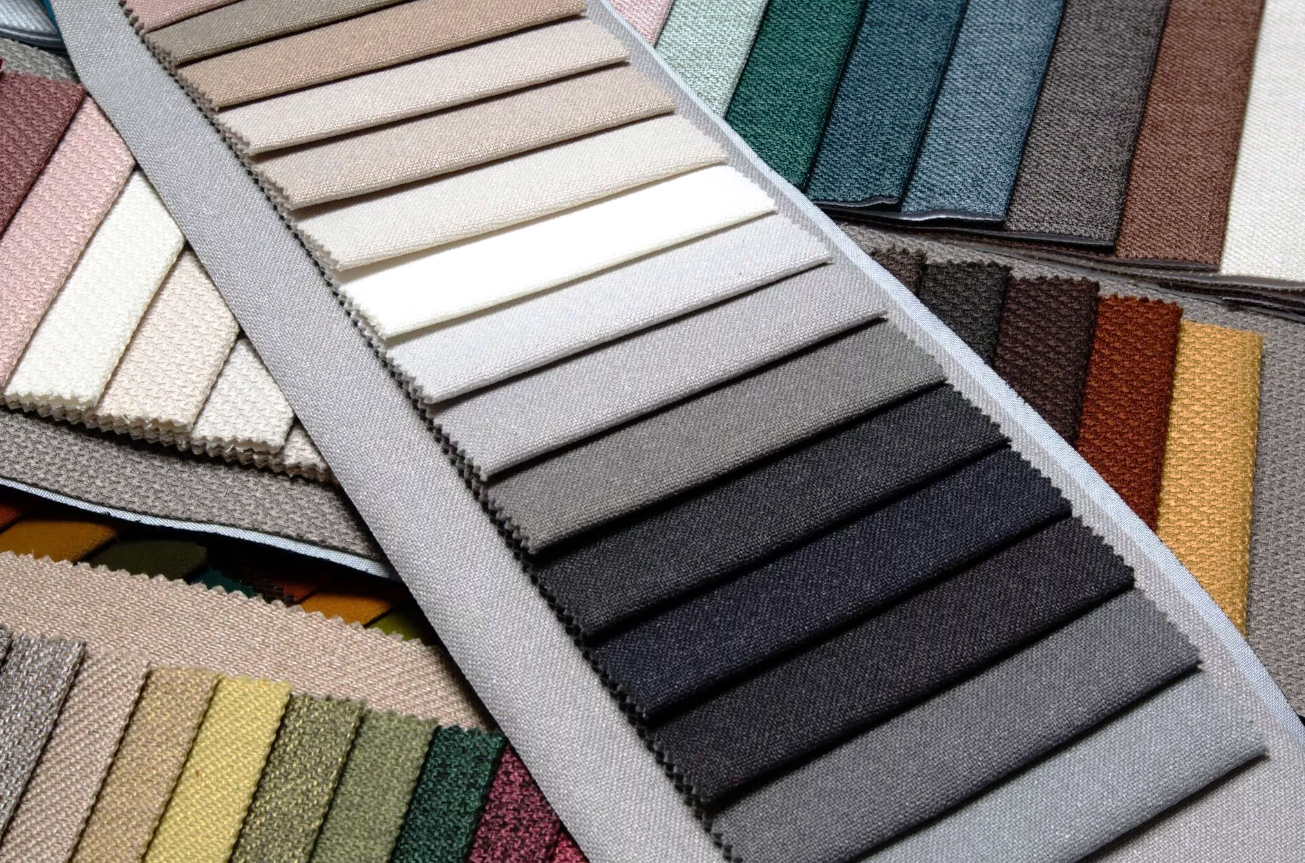 The first thing people notice when choosing a sofa is its upholstery. Not only the appearance of the furniture depends on it, but also the wear resistance of the upholstery, ease of care, and comfort. When selecting fabric for a sofa, pay attention to materials that are distinguished by durability.
The first thing people notice when choosing a sofa is its upholstery. Not only the appearance of the furniture depends on it, but also the wear resistance of the upholstery, ease of care, and comfort. When selecting fabric for a sofa, pay attention to materials that are distinguished by durability.
Upholstery materials such as jacquard, flock, chenille, and microfiber are not only durable but also available in various textures and upholstery colors, which facilitates integration into the interior. For families with pets, you can consider sofas with anti-claw upholstery that is resistant to scratches. To increase the service life of the sofa, it's worth choosing options with Teflon coating that protects against dirt.
Did you know that in 2025, bouclé and chenille fabrics are considered the main sofa trends of 2025 due to their soft, cozy texture that adds depth and luxury to living spaces?
Frame and Base: The Key to a Sturdy Sofa
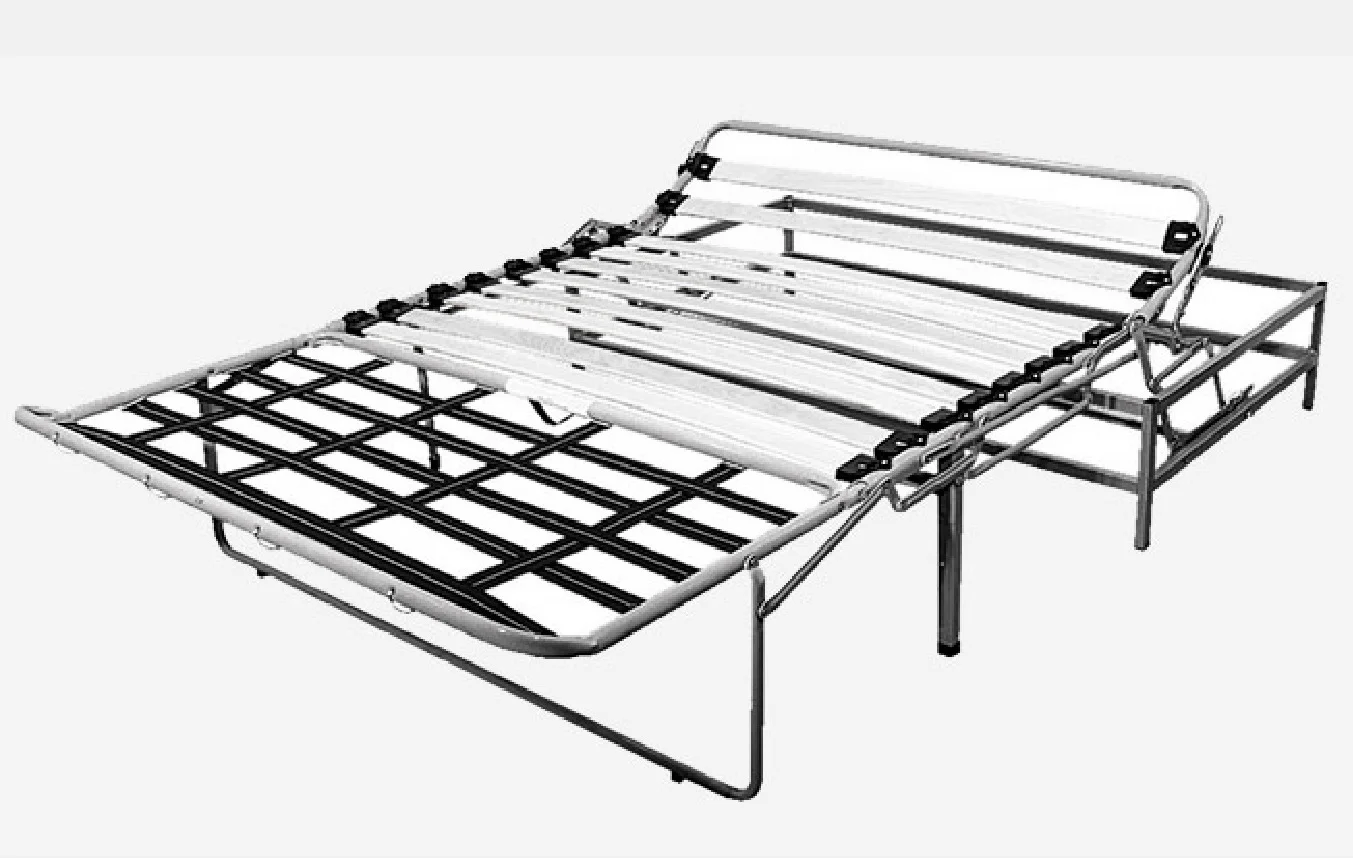 The most important element of a reliable sofa is its frame. The strength of the entire structure and the service life of the sofa depend on it. Wooden frames made of hardwood (oak, beech, walnut, or ash) are preferred for producing quality upholstered furniture.
The most important element of a reliable sofa is its frame. The strength of the entire structure and the service life of the sofa depend on it. Wooden frames made of hardwood (oak, beech, walnut, or ash) are preferred for producing quality upholstered furniture.
Softwood species are less durable, although they allow you to purchase a sofa inexpensively. Metal frames are distinguished by ease of repair and long service life, however, they may not be suitable for every interior style. Upholstered furniture quality standards stipulate that a sturdy frame should not creak or deform under load.
Want a simple test to check the quality of the construction? Lift the sofa by one corner and shake it slightly. If the frame bends or creaking is heard, this is a sign of poor quality. Be sure to check the connections — they should be strong, without any play. This way, you can easily distinguish a good sofa from a bad one right in the store.
Sofa Fillings: Comfort and Durability
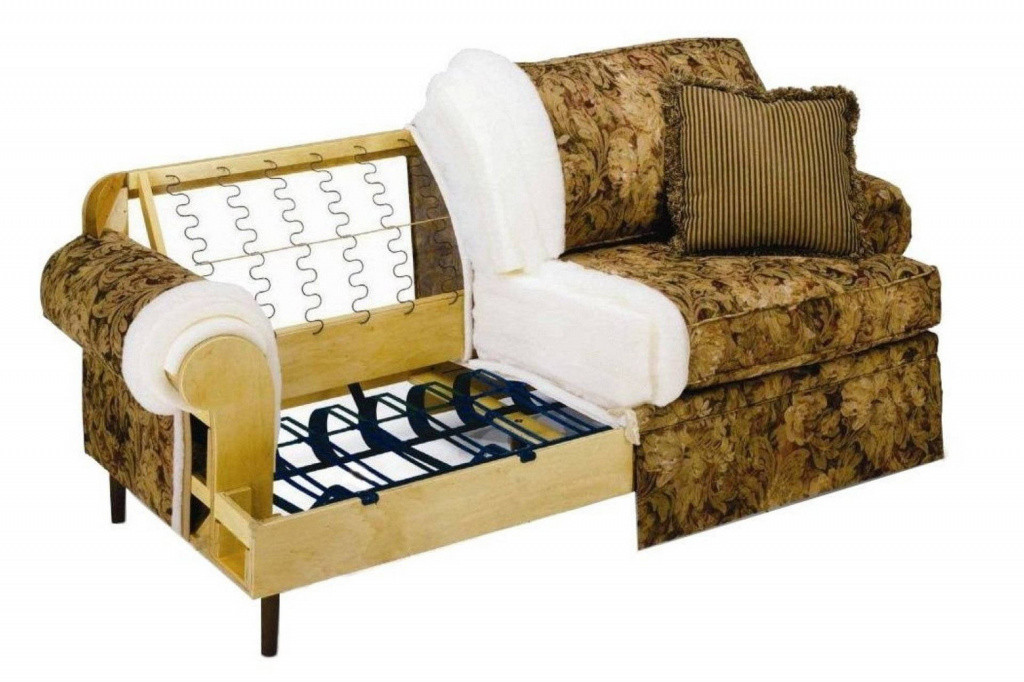 When choosing a sofa filling, it's worth considering not only comfort but also the durability of materials. Comparison of sofas by fillings shows that it is recommended to avoid cheap foam with low density, as it quickly loses shape. The best options for a quality sleeping sofa will be:
When choosing a sofa filling, it's worth considering not only comfort but also the durability of materials. Comparison of sofas by fillings shows that it is recommended to avoid cheap foam with low density, as it quickly loses shape. The best options for a quality sleeping sofa will be:
- High-density polyurethane foam (from 35 kg/m³)
- Natural or artificial latex
- Hollofaiber
- Combined fillings with different layers of firmness
If the sofa bed is planned to be used as a regular sleeping place, it's better to choose a model with a spring block and sofas with an orthopedic base. This will ensure proper support for the spine during sleep. The optimal firmness of the sofa depends on your weight and preferences — medium-firm models are universal for most users.
"When choosing a filling, pay attention to foam with a density of not less than 35 kg/m³. This will ensure the durability of the cushions and preservation of their shape even with intensive use." — Emily Russell, furniture manufacturing expert
Transformation Mechanisms: Choice for Daily Use
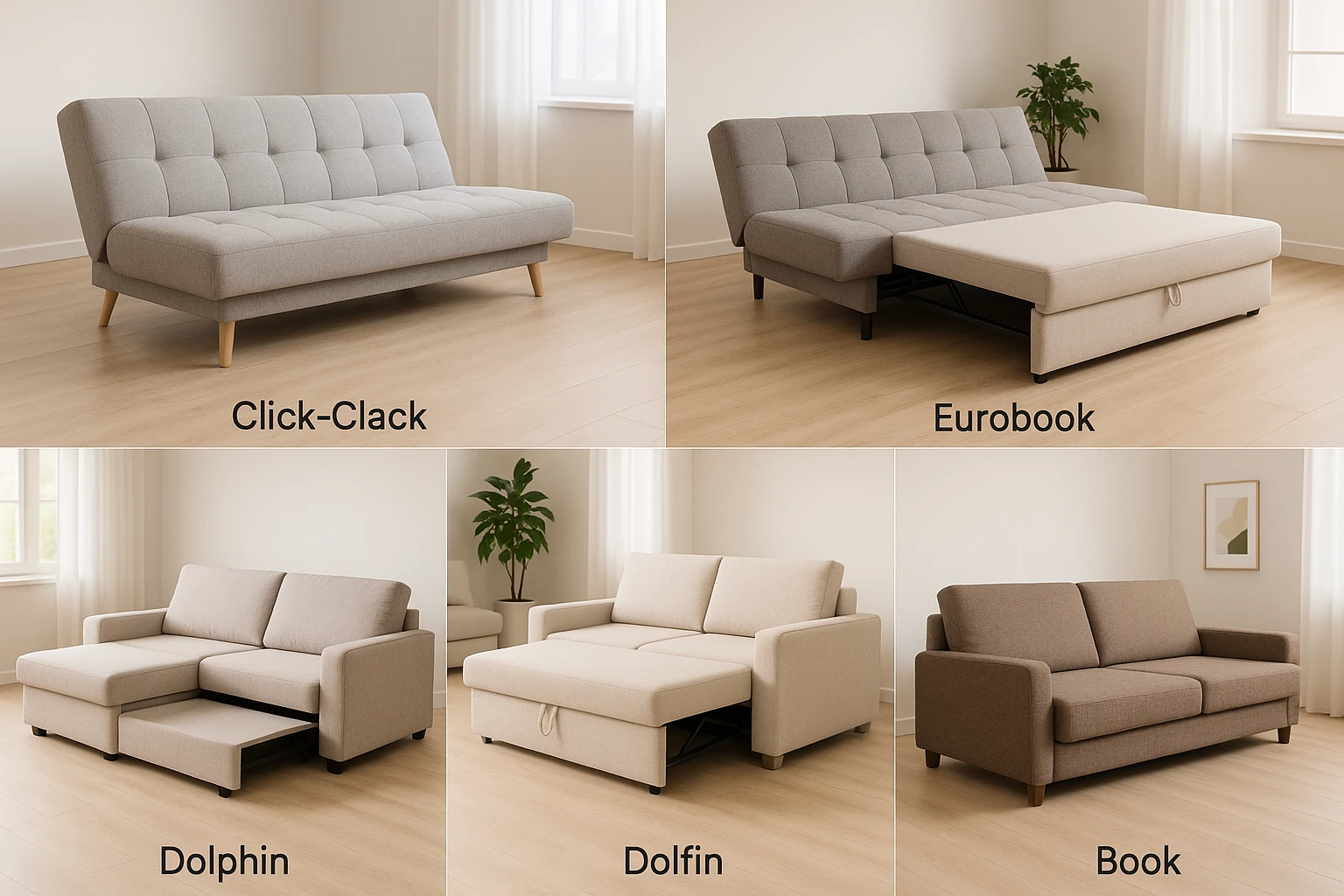 Folding systems play a key role in the functionality of a sofa with a folding mechanism. Not only convenience but also the durability of the entire structure depends on their reliability. If you plan to order a sofa online, be sure to study information about its transformation mechanism.
Folding systems play a key role in the functionality of a sofa with a folding mechanism. Not only convenience but also the durability of the entire structure depends on their reliability. If you plan to order a sofa online, be sure to study information about its transformation mechanism.
Let's consider the main types of mechanisms for a transformable sofa:
- "Book": A traditional and simple mechanism where the backrest lowers forward, forming a sleeping place. Requires free space in front of the sofa.
- "Euro-book": A more modern version where the sleeping place rolls forward, and the backrest lowers to the freed space. It's convenient and ensures even wear.
- "Accordion": Unfolds forward like an accordion. Simple to use and convenient for frequent conversion into a sleeping place.
- "Click-clack": Allows fixing the backrest in various positions. Convenient for creating various rest configurations.
- "Dolphin": A popular mechanism for corner sofas, where the sleeping place slides out from under the seat.
When choosing a mechanism, it's important to determine which sofa mechanism is more reliable specifically for your usage scenario. For daily use, "Euro-book" or "Dolphin" mechanisms are recommended, which are distinguished by increased reliability. Be sure to check the mechanism at least 5-7 times before purchasing to ensure smoothness of operation and absence of jamming.
Sofa Sizes and Shape: Selection for the Space
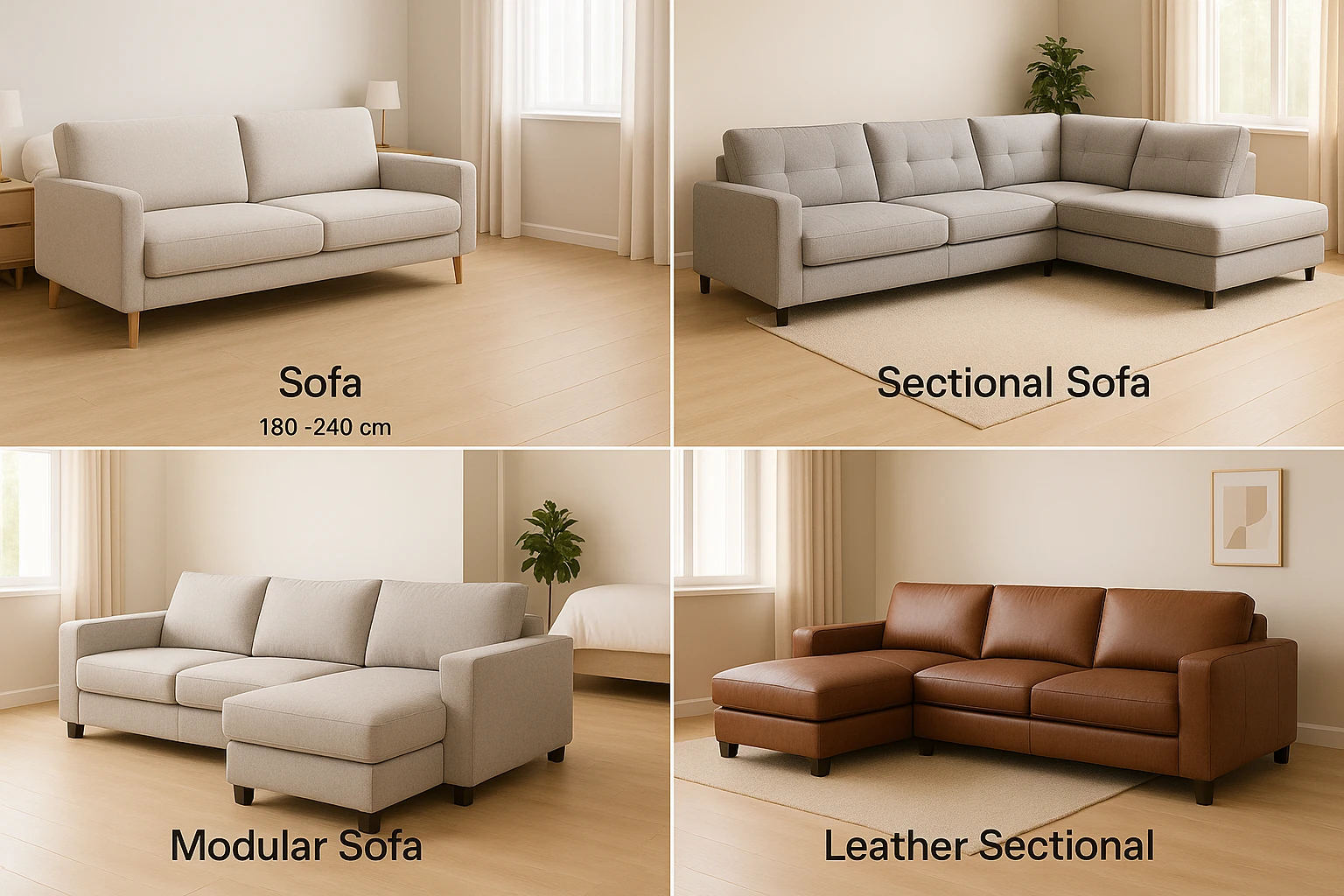 When choosing a sofa for a small room or a spacious living room, it is necessary to consider the dimensions of sofas for limited space. It's important that in the folded state, the furniture does not clutter the room, and in the unfolded state — provides a comfortable sleeping place.
When choosing a sofa for a small room or a spacious living room, it is necessary to consider the dimensions of sofas for limited space. It's important that in the folded state, the furniture does not clutter the room, and in the unfolded state — provides a comfortable sleeping place.
The shape of the sofa should correspond to the design and functionality of the room:
- Straight sofas (length 180-240 cm) — for compact spaces and bedroom sofas
- Corner sofa (usually 250x250 cm) — for large living rooms and corner areas
- Modular sofa — for flexible organization of space with the possibility of rearrangement
- Corner sofas made of genuine leather — for prestigious, presentable interiors
Have you ever thought about what shape would be ideal for your lifestyle? Perhaps premium-class modular sofas with the ability to transform for different usage scenarios will be the perfect solution for a modern dynamic rhythm of life?
| Sofa Type | Optimal Space | Functionality | Durability | Price (range, $) |
|---|---|---|---|---|
| Straight sofa | Small and medium rooms | Basic, often with a folding mechanism | High | 500-2000 |
| Corner sofa | Large rooms, corner spaces | Extended, often with storage | Medium-high | 800-3500 |
| Modular sofa | Any spaces (adaptive) | High, transformable | Medium | 1000-4000 |
| Island sofa | Large open spaces | High, space zoning | Medium-high | 1500-5000 |
| Sofa bed | Small-medium rooms | Maximum (2 in 1) | Medium (depends on the mechanism) | 700-3000 |
The table clearly demonstrates that different types of sofas have their advantages and are suitable for various operating conditions. When choosing, it's important to determine priorities: space, functionality, durability, or sofa price. Note that sofa sizes vary: straight ones usually have a length of 180-240 cm, corner ones occupy an area of approximately 250x250 cm, and folding models in the unfolded state can reach a depth of 200-220 cm.
Functional Additions for a Convenient Sofa
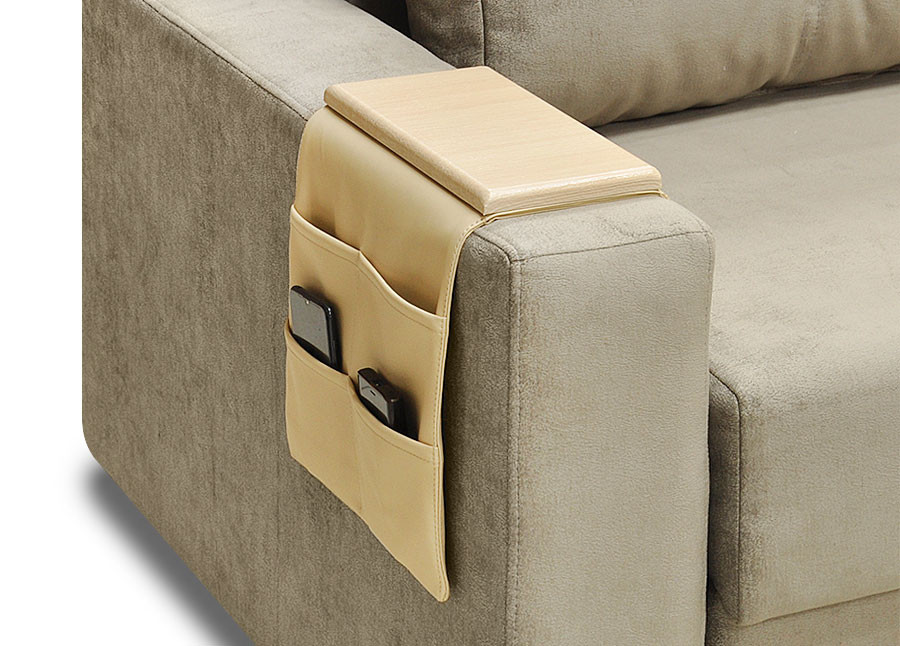 Modern sofas can be equipped with many functional elements that significantly increase the practicality of furniture in everyday use. When choosing a sofa for a family, pay attention to the following useful additions:
Modern sofas can be equipped with many functional elements that significantly increase the practicality of furniture in everyday use. When choosing a sofa for a family, pay attention to the following useful additions:
- Storage drawers — ideal for bed linens
- Cup holders and built-in tables — for comfortable rest
- USB ports and built-in charging stations — for a modern lifestyle
- Adjustable headrests — for individual comfort
- Removable covers — for easy sofa care
If you're looking for a stylish sofa with maximum functionality, pay attention to the catalog of sofas with technological additions — they are becoming increasingly popular in modern interiors and facilitate everyday use.
Safety and Environmental Friendliness of Sofas: Important Health Aspects
 The stability of furniture is extremely important for safety, especially in homes with children. Make sure that the structure will not tip over during normal use or transformation. Check the reliability of the legs and base — they should provide stability on any floor covering.
The stability of furniture is extremely important for safety, especially in homes with children. Make sure that the structure will not tip over during normal use or transformation. Check the reliability of the legs and base — they should provide stability on any floor covering.
Environmentally friendly materials used in production should be safe and not contain toxic substances. This applies to both upholstery and fillings, adhesives, and paints. Upholstery materials with environmental safety certificates guarantee a low level of toxicity, which is especially important when choosing a sofa for allergy sufferers.
Sofas from manufacturers often have more complete information about the composition of materials and their safety than products of unknown origin. Make sure that the furniture meets the quality standards for upholstered furniture and has the necessary certificates.
A real story from Sarah from Los Angeles: "After moving to a compact studio, I spent a long time looking for the perfect sofa. At first, I considered budget options, but reviews warned about low quality. On a friend's advice, I researched BenchMade Modern customizable sofas and ordered a modular sofa in a pet-resistant fabric. Despite an incident with my pet, the fabric stood the test, and the modular design allowed me to rearrange sections to accommodate guests. After two years, it looks like new, which proves: investments in quality really pay off."
Sofa Warranty and Service
When buying a sofa, it's important to clarify the warranty conditions. The rating of sofa manufacturers often takes into account the term of warranty service, which for premium sofas can reach 10 years. Find out the conditions for replacement or repair in case of defects.
A good indicator of manufacturer reliability is the possibility of service and restoration of sofas after the expiration of the warranty period. Professional restoration can cost 30-50% of the price of a new sofa, but will extend its life by 5-7 years.
When buying sofas in installments, pay special attention to the warranty conditions — it should cover the entire period of payments. Some companies also offer sofa delivery with professional assembly, which can be important for complex models.
Design and Ergonomics: Aesthetics and Comfort
The design of the sofa should harmoniously blend with the overall decor of the room. This includes selecting color, texture, and style so that the furniture becomes a decoration of the interior. The ergonomics of the sofa is no less important — your sitting and lying comfort depends on it.
Evaluate how versatile a stylish sofa is and whether it will remain relevant in a few years. Some designs quickly become outdated, while classic models, such as Chesterfield, remain popular for decades due to timeless elegance.
When choosing, also consider the seat height (optimally 40-45 cm), depth (from 60 cm for comfortable sitting), backrest angle, and armrest height. Ergonomic models help maintain correct posture and reduce strain on the spine.
Reviews and Reputation: Market Opinion
Customer reviews and expert recommendations are a valuable source of information for evaluating quality and comfort. They provide real data on the durability of materials, ease of use, and overall customer satisfaction.
Study opinions on specialized websites, forums, or social networks. Pay attention to frequently mentioned problems, advantages, and brand reputation. Which sofa brands are the most high-quality from the user's point of view? This question is worth researching before buying.
Don't forget that the global upholstered furniture market, including sofas, is valued at $677 billion in 2022 and is projected to reach $1.07 trillion by 2030, with an annual growth of 5.9%. This indicates the growing importance of quality furniture in our lives. Interestingly, the average service life of a quality sofa is 7-15 years, while inexpensive models rarely serve longer than 3-5 years. Think about this before being tempted by a low price!
Conclusion: An Investment in Comfort
Choosing a quality sofa is a complex task requiring attention to many details. From the upholstery material and filling to the frame construction and transformation mechanism — each element is important for ensuring comfort, durability, and aesthetics of your furniture. Sofa selection criteria should correspond to your individual needs and lifestyle.
Remember that a quality sofa for daily use is not just a purchase, but an investment that will pay off with comfort and pleasure for many years. Perhaps it's worth making a list of priorities before going to a furniture store to not get lost among the variety of models.
And which parameters are most important for you? Structural reliability, filling comfort, upholstery practicality, or design aesthetics? We hope that our guide will help you choose the ideal sofa for your living room or bedroom, which will become the center of coziness in your home and serve for many years.
